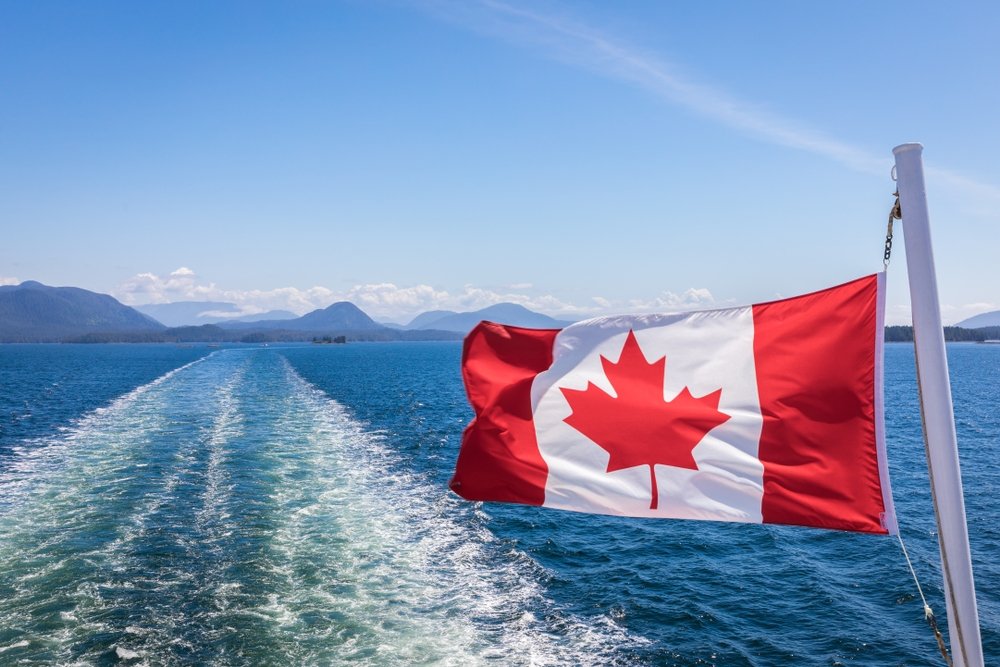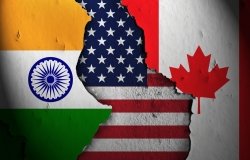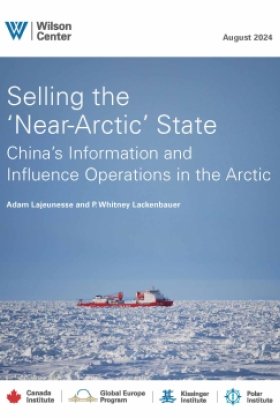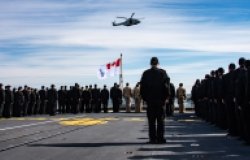Water Diplomacy Flows Through US - Canadian Relations
In this article Dr. Christopher Sands highlights the recent agreement between US President Joe Biden and Canadian Prime Minister Justin Trudeau to update the 1961 Columbia River Treaty. This landmark agreement, announced during the NATO Summit in Washington, marks a significant development in bilateral relations, focusing on hydroelectric dams, stable electricity supply, flood risk management, and environmental stewardship. The treaty exemplifies water diplomacy, crucial for managing shared water resources, and reflects the longstanding cooperative efforts between the US and Canada in addressing transboundary water issues.

Shutterstock
On the sidelines of the North Atlantic Treaty Organization (NATO) 75th Summit in Washington, US President Joe Biden and Canadian Prime Minister Justin Trudeau announced an agreement in principle to update the 1961 Columbia River Treaty.
The agreement in principle followed multiple rounds of negotiations that began in 2018 when the United States and Canada agreed to revisit the treaty’s terms for hydroelectric dams and cross border grid connections that ensure stable electricity supplies throughout the region, flood risk management to protect the downriver US communities, and provisions affecting pacific salmon populations. The importance of the treaty was reflected in the priority it received in the Biden-Trudeau Roadmap for a Renewed US - Canada Partnership announced at their first bilateral meeting in February 2021.
A significant aspect of this update is the inclusion of Indigenous communities in the governance of the Columbia River ecosystem for the first time. This inclusion marks a step forward in recognizing the importance of diverse stakeholder involvement in environmental management. Both nations aim to finalize negotiations on these amendments and send them to the United States Senate and the Canadian Parliament for ratification as soon as possible.
The Columbia River Treaty is an example of water diplomacy; that is, diplomacy over shared waters and waterways. What makes water diplomacy distinct from other types of diplomacy are the features of water as a resource. It is necessary for life, available in finite amounts and can become contaminated or locally depleted presenting tensions around scarcity and water shifts across borders via air and groundwater as well as bodies of water visible on the surface. This requires diplomacy to find agreements to cooperatively manage, share access to, and understand through scientific and ecosystem research. Water diplomacy is also multilateral, involving national and local governments, businesses, and civil society groups, all stakeholders in the outcomes water diplomacy hopes to realize.
For the United States and Canada, water diplomacy has been a distinctive part of the modern bilateral relationship, marked by long, difficult, but often constructive efforts to reach consensus. Border disputes predominated in the 19th century when the United States negotiated with Britain. The Dominion of Canada, composed of most of the colonies of British North America, had local authority but would not be granted the right to an independent foreign policy until 1931.
In a recent book, historian Meredith Denning argued that this resulted in two countervailing pressures that Anglo-American diplomacy had to manage: geopolitical factors arising from the global and often contentious Anglo-American relationship and local interests in states and territories that could produce clashes with Canadian neighbors. The emergence of a passionate Canadian nationalism complicated diplomacy further. When a dispute over the Alaska boundary was settled in1903 in the United States’ favor, nationalist Canadians were as outraged at diplomats in London as by those in Washington. The sacrifice of local interests to avoid Great Power conflict was a sensible bargain in those capitals, but from Ottawa, it was seen as a betrayal.
The need to manage local tensions led Britain and the United States to negotiate the Boundary Waters Treaty of 1909 which established the International Joint Commission (IJC) that included US and Canadian commissioners in an institution designed to resolve local disputes with local input, and no intervention from Britain. The British government chose to grant the Dominion government greater autonomy to prevent local disputes from jeopardizing relations with the United States.
The original Columbia River Treaty was a product of study and consultation by the IJC. The Columbia River begins in British Columbia and flows southward to the Pacific Ocean through Montana, Idaho, Washington state, and Oregon. The United States began building hydroelectric dams on the Columbia River in 1931 to provide irrigation and electricity to the rural regions of the Pacific Northwest as part of US President Franklin Roosevelt’s response to the Great Depression. The abundant hydroelectricity allowed for aluminum production in the region that made it a center for aircraft production essential for the United States in the Second World War and the Cold War. But all these benefits were dependent on Canada, which controlled the headwaters of the Columbia River.
The Columbia River Treaty established local governance for the river, and a payment to the Canadians for allowing enough water to flow past its dams on the Columbia to sustain the dams and irrigation in the United States. The Columbia River is the second largest river in the United States, after the Mississippi, and provides drainage for more than 260,000 square miles (about the area of Texas) as it flows for 1,200 miles (about the distance from Florida to New York City) from its source in the Canadian Rockies to the Pacific.
The IJC was also employed to explore the potential for a series of canals to link the Great Lakes to the St. Lawrence River and the Atlantic Ocean. After broad consultations, the Commission recommended in favor of building the St. Lawrence Seaway in 1921, but it took thirty-three years of negotiations between the United States and Canada, and between several US presidents and the US Senate before the St. Lawrence Seaway Treaty was completed in 1954, and the St. Lawrence Seaway Commission was established to ensure local governance. The Seaway opened in 1957 with Canadian Prime Minister John Diefenbaker, President Dwight D. Eisenhower, and Queen Elizabeth II (in her capacity as Queen of Canada).
Beyond the St. Lawrence Seaway and lake transportation, the Great Lakes have prompted extensive water diplomacy between the United States and Canada. The International Joint Commission was engaged to study the problem of industrial pollution in the Great Lakes, which are at the heart of North America’s industrial heartland. Marshalling data on air, water, and soil pollution, the IJC provided the basis for the 1972 Great Lakes Water Quality Agreement and its update in 2012. These agreements have fostered efforts by the United States and Canada, the states and provinces that border the lakes (Ontario on the Canadian side, Illinois, Indiana, Michigan, Minnesota, New York, Ohio, Pennsylvania, and Wisconsin on the US side), and local governments throughout the region to protect the Great Lakes, which hold 84% of North America's surface fresh water, about 21% of the world's supply of surface fresh water.
NATO’s 75th anniversary and rising geopolitical tensions received greater media attention, but the Agreement in Principle to revise and update the Columbia River Treaty has the potential to be more consequential for Americans and Canadians.
About the Author

Christopher Sands
Christopher Sands is Director of the Wilson Center’s Canada Institute, the largest policy research program on Canada outside Canada and the leading source of scholarship on US-Canadian relations in Washington, DC. Dr. Sands previously directed applied policy research programs at the Center for Strategic and International Studies and the Hudson Institute and has published extensively over a career of more than 30 years in Washington think tanks.
Read More
Canada Institute
The mission of the Wilson Center's Canada Institute is to raise the level of knowledge of Canada in the United States, particularly within the Washington, DC policy community. Research projects, initiatives, podcasts, and publications cover contemporary Canada, US-Canadian relations, North American political economy, and Canada's global role as it intersects with US national interests. Read more













